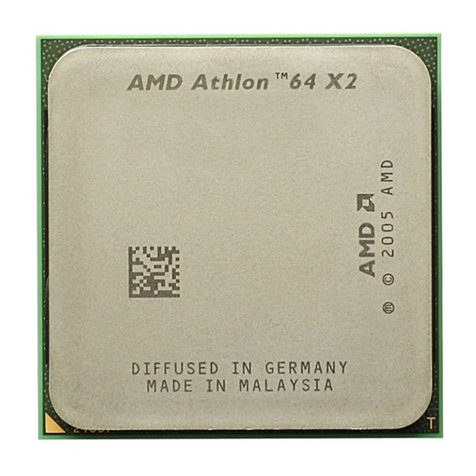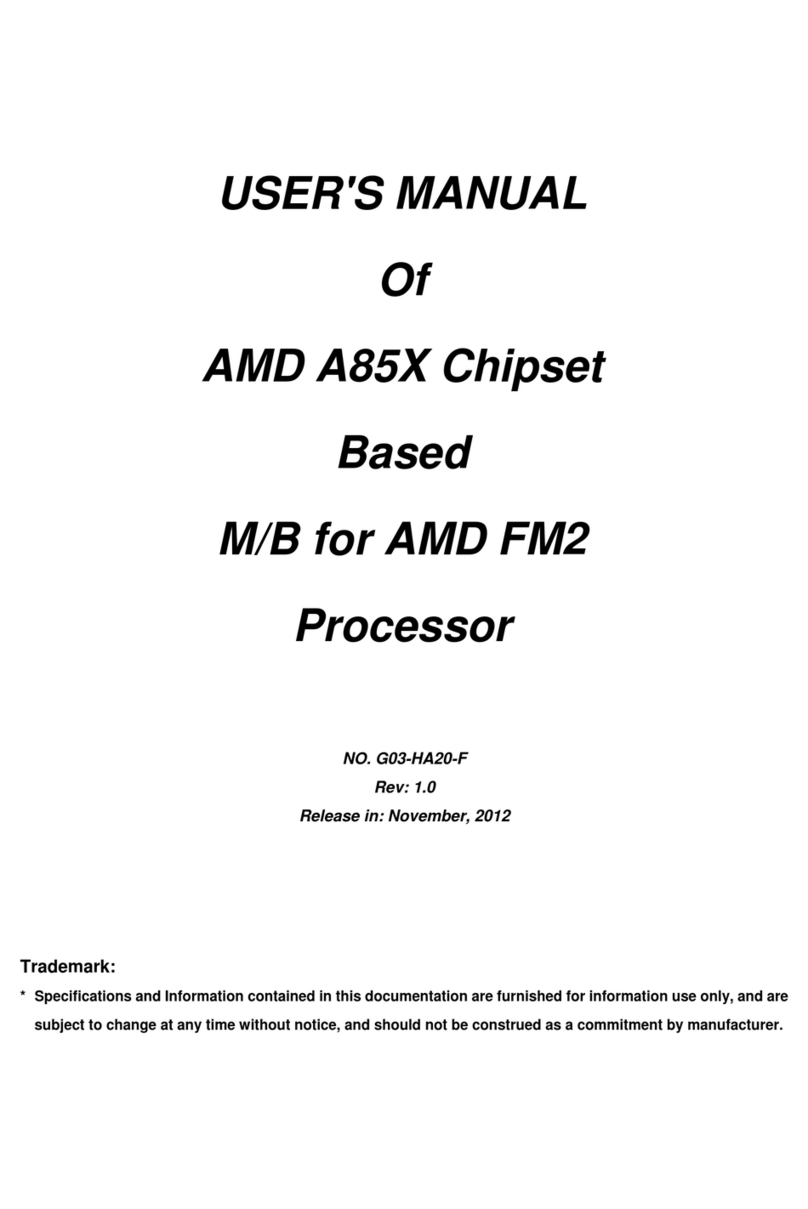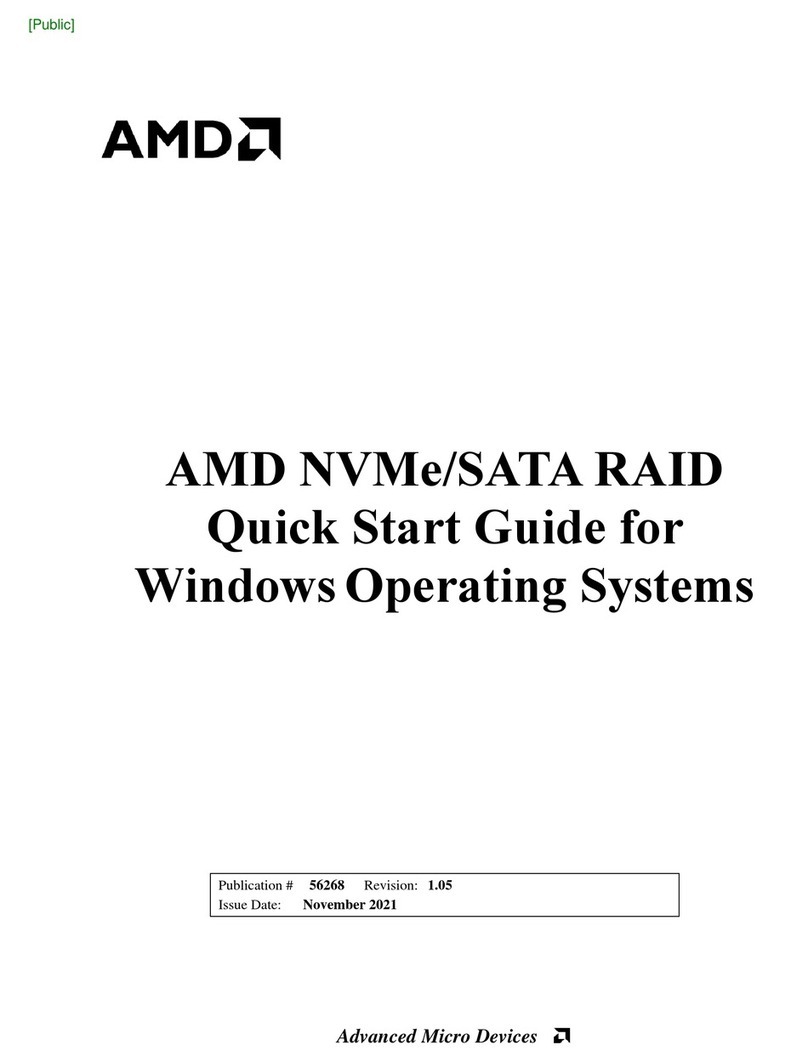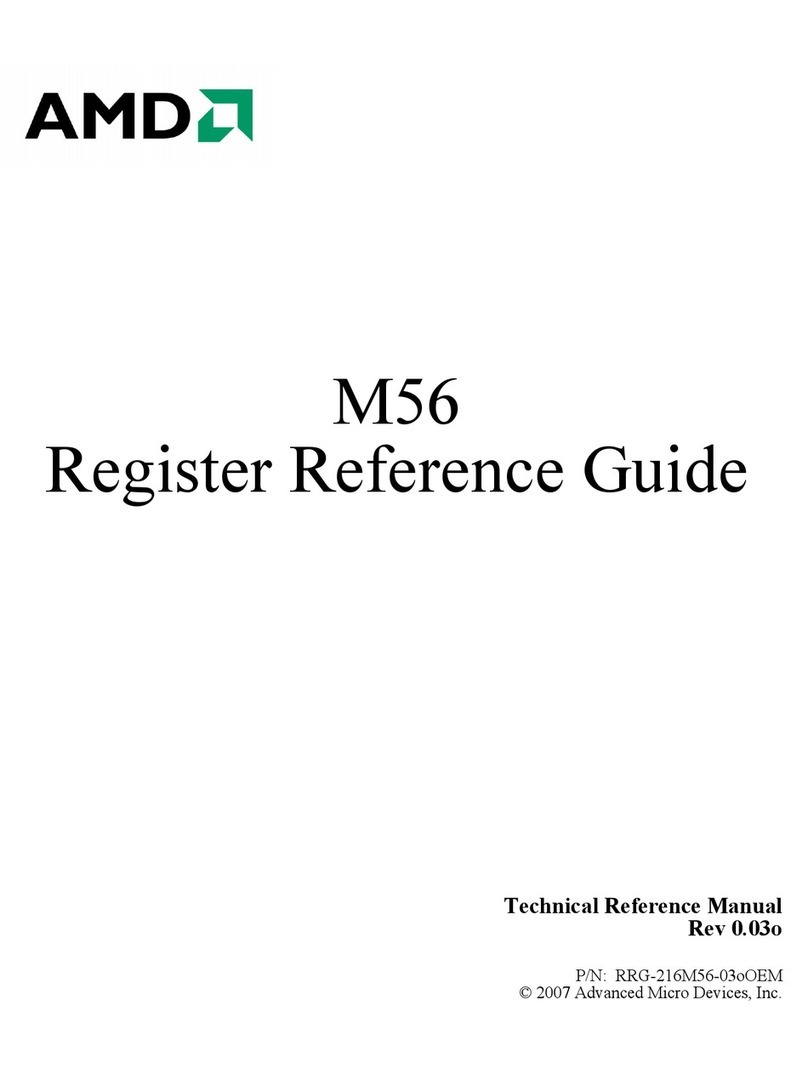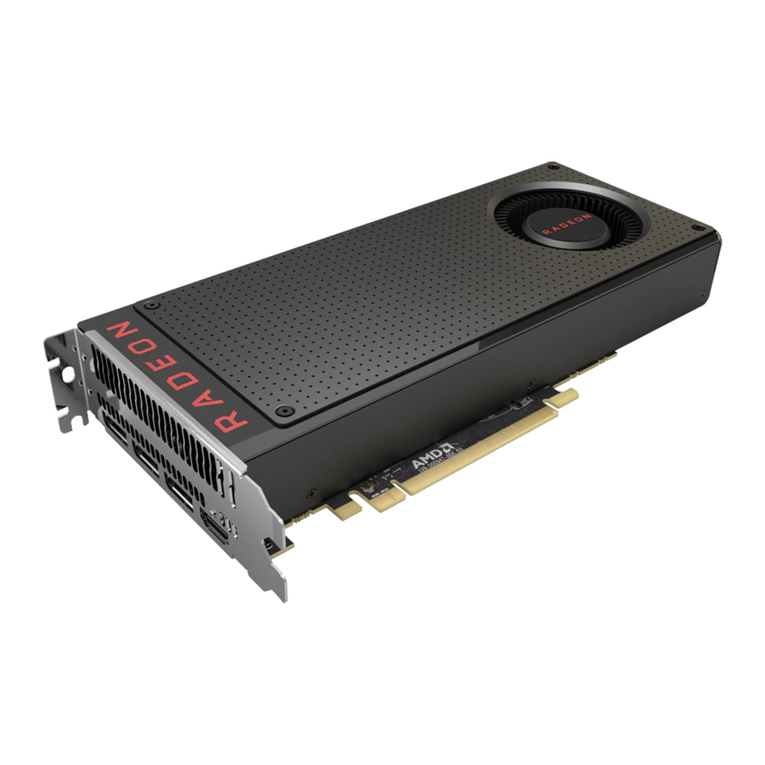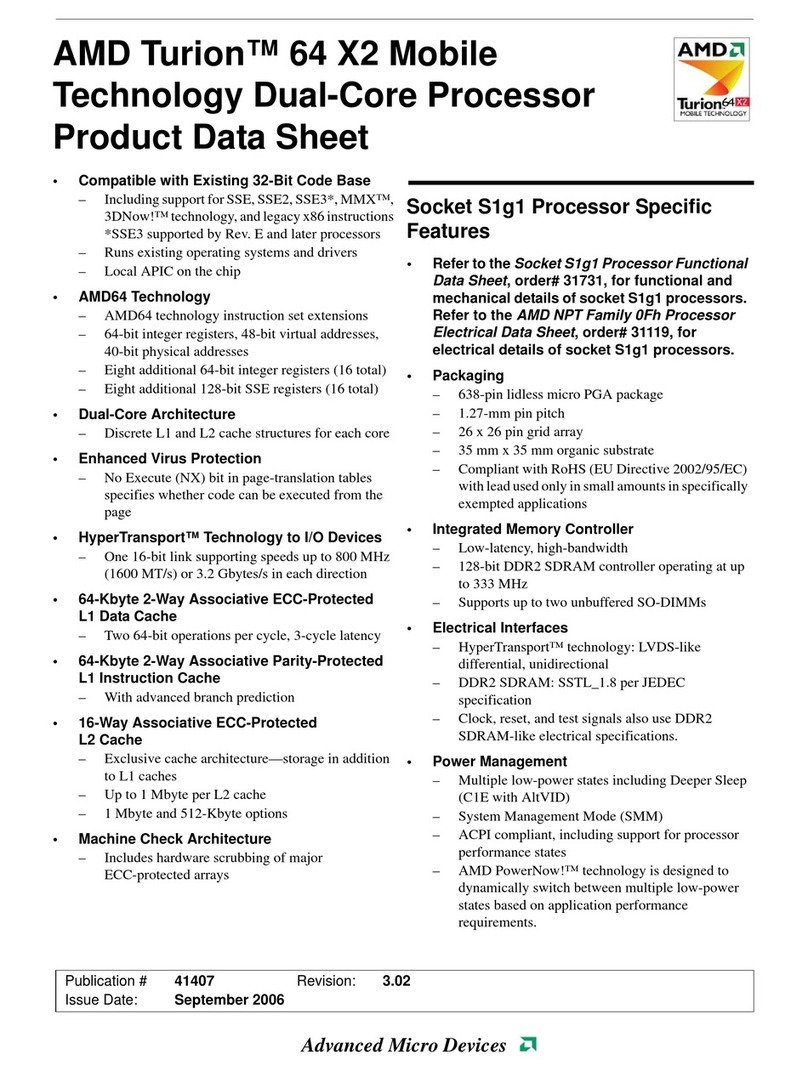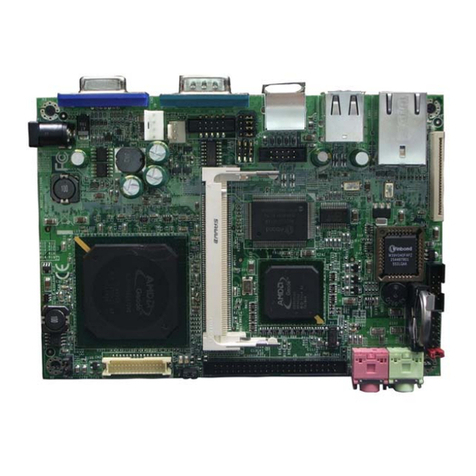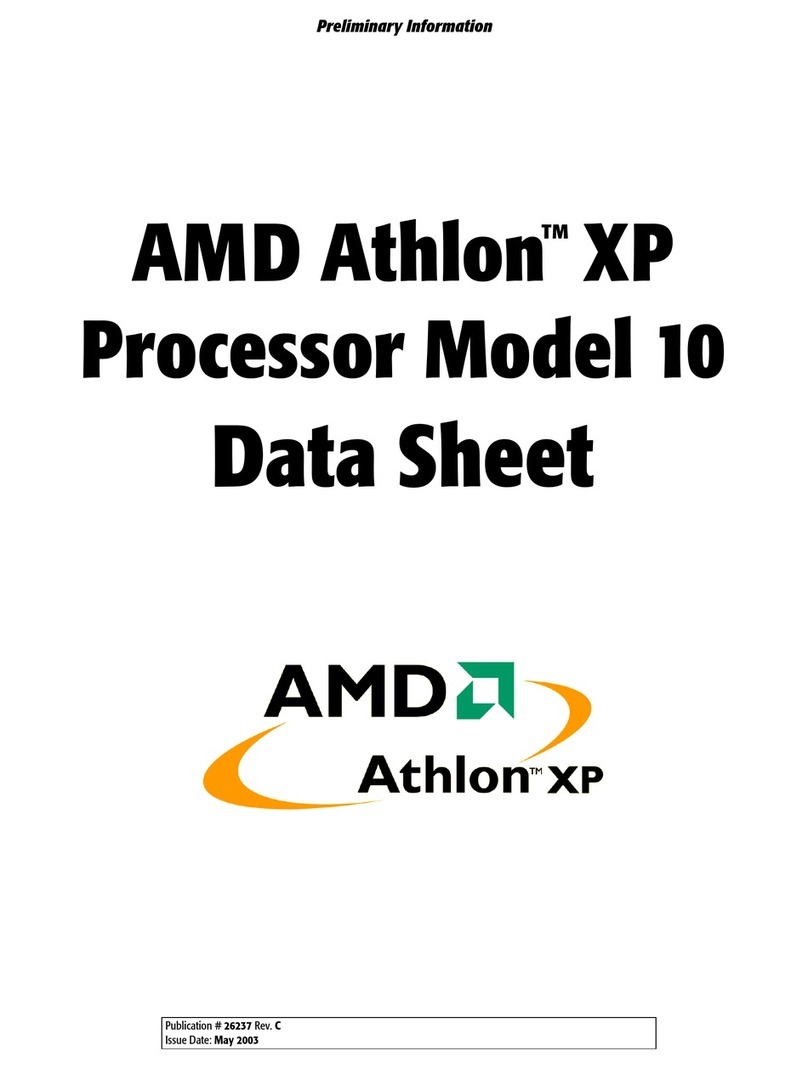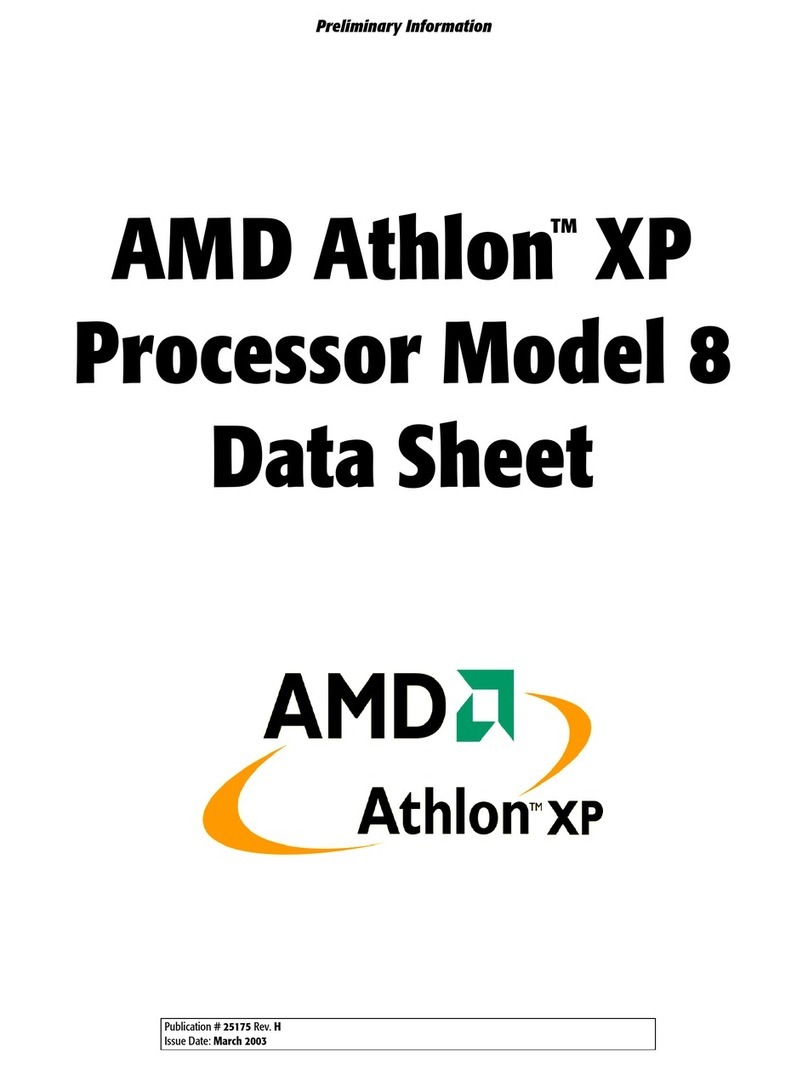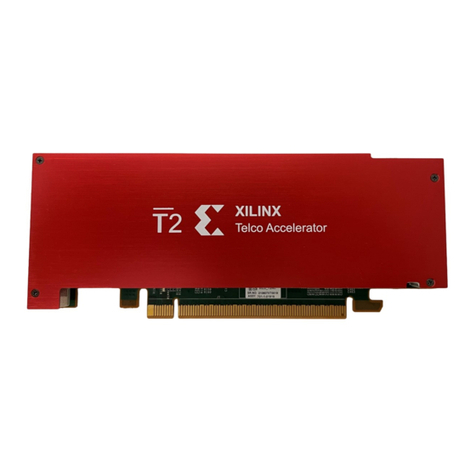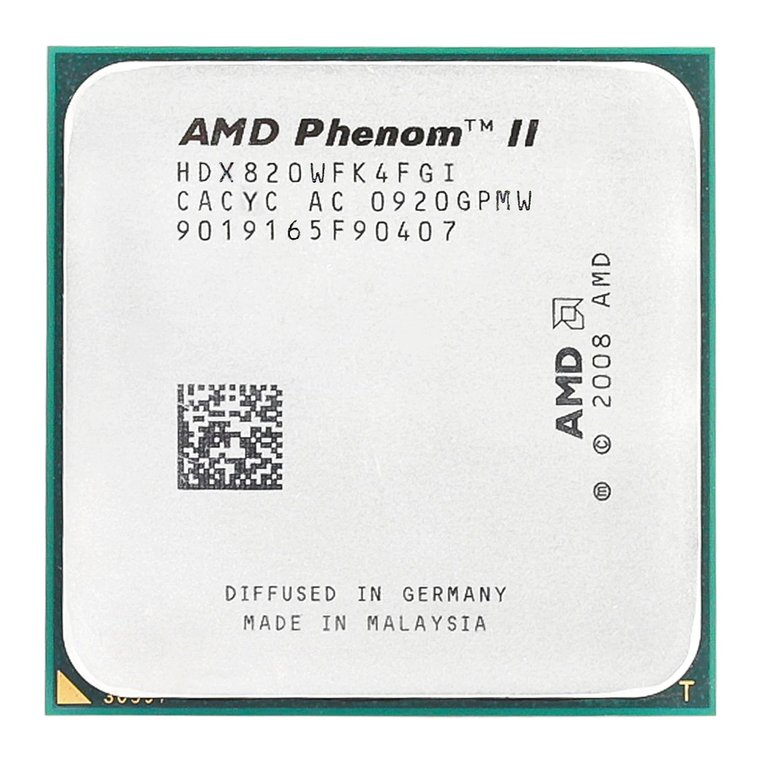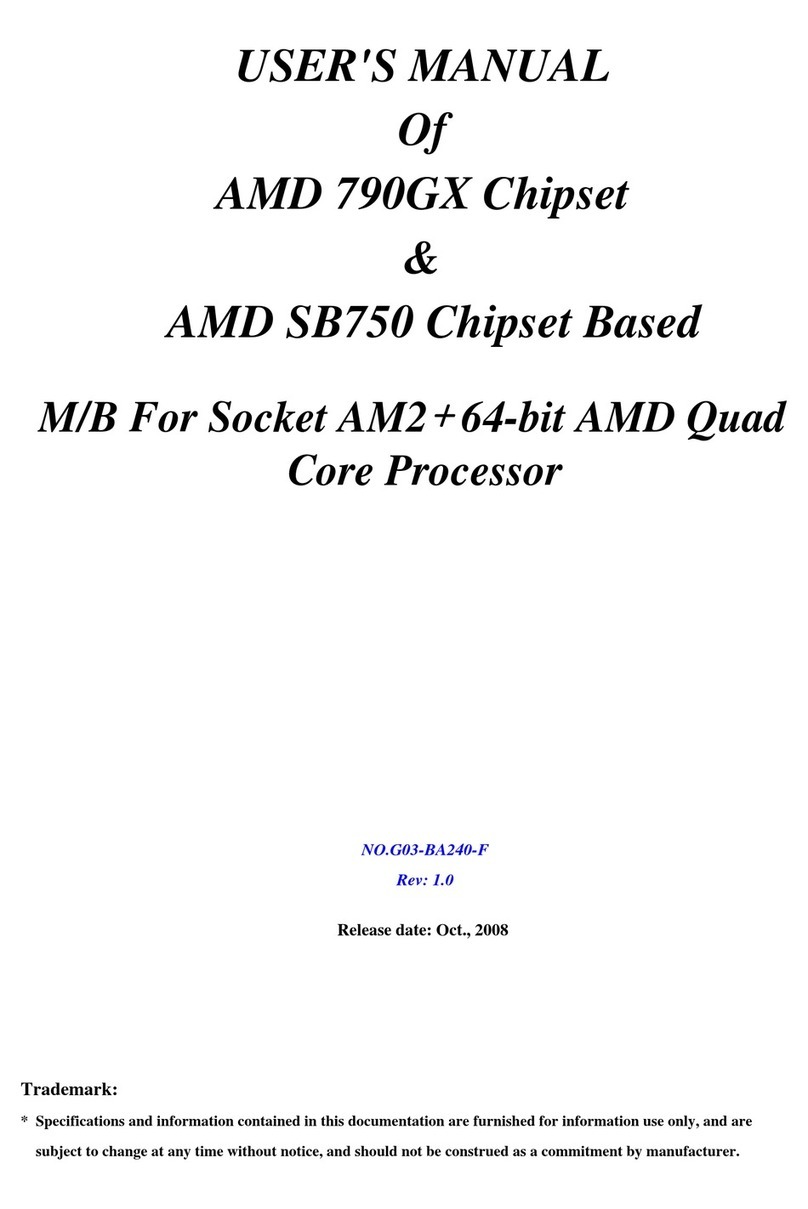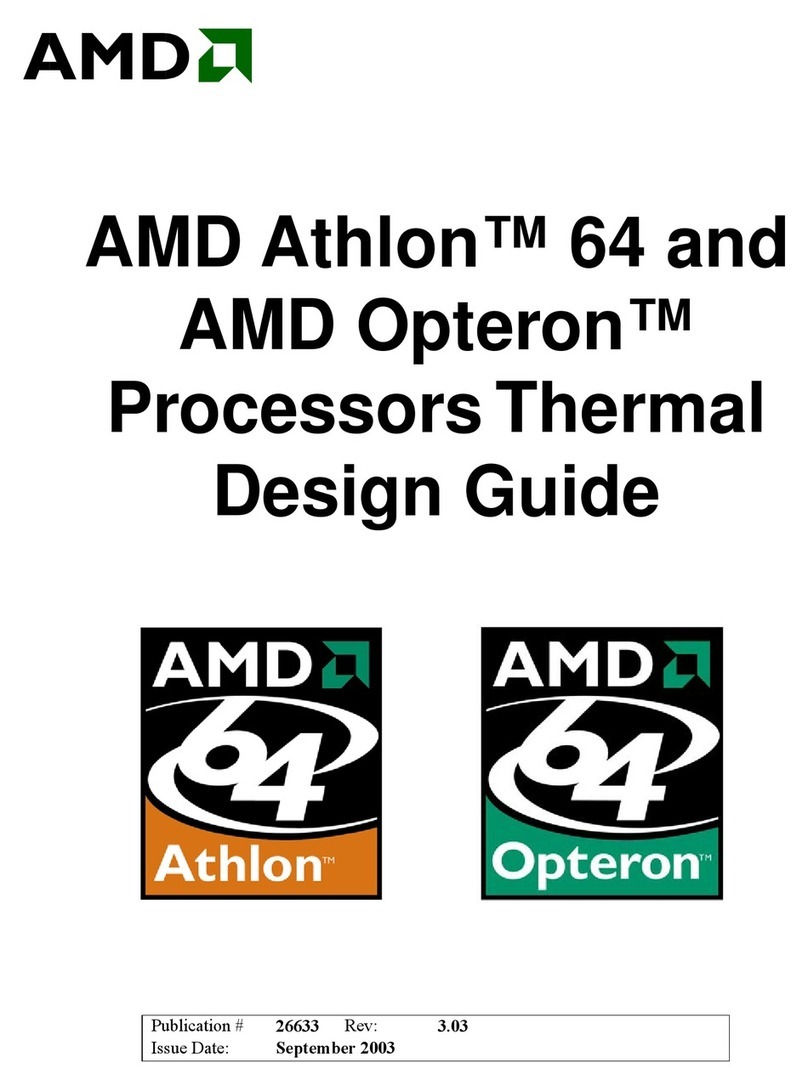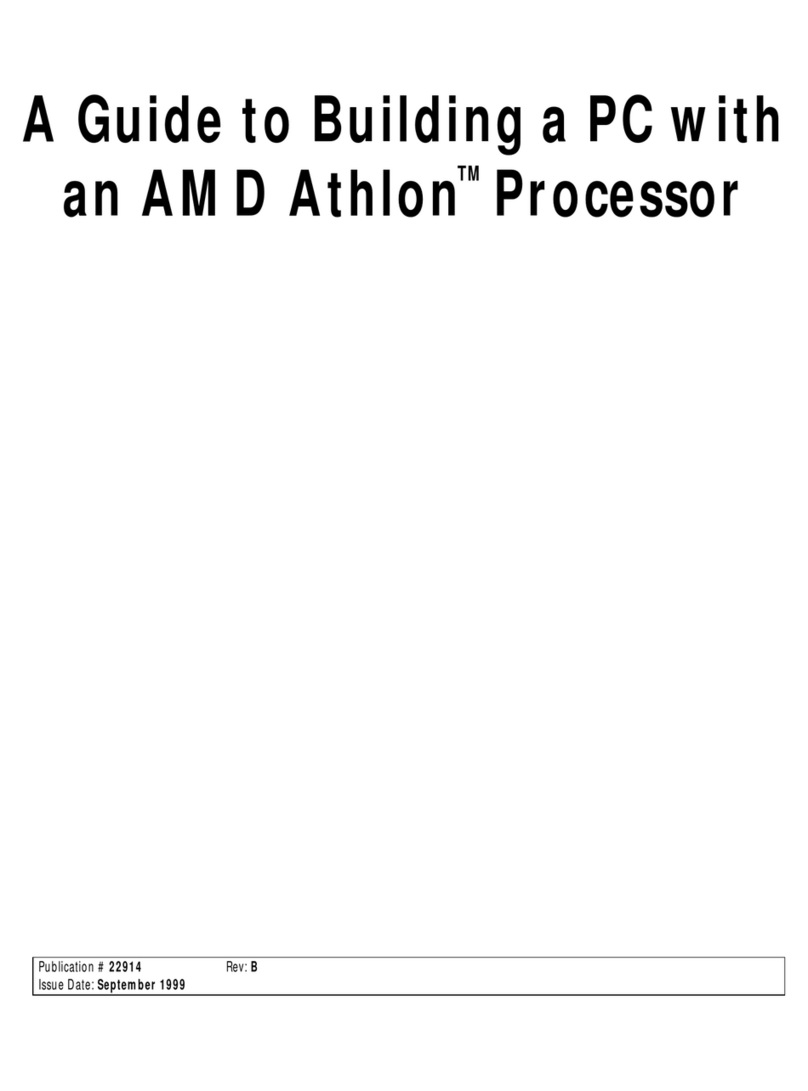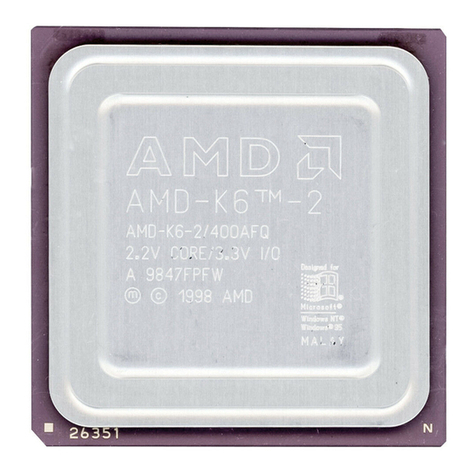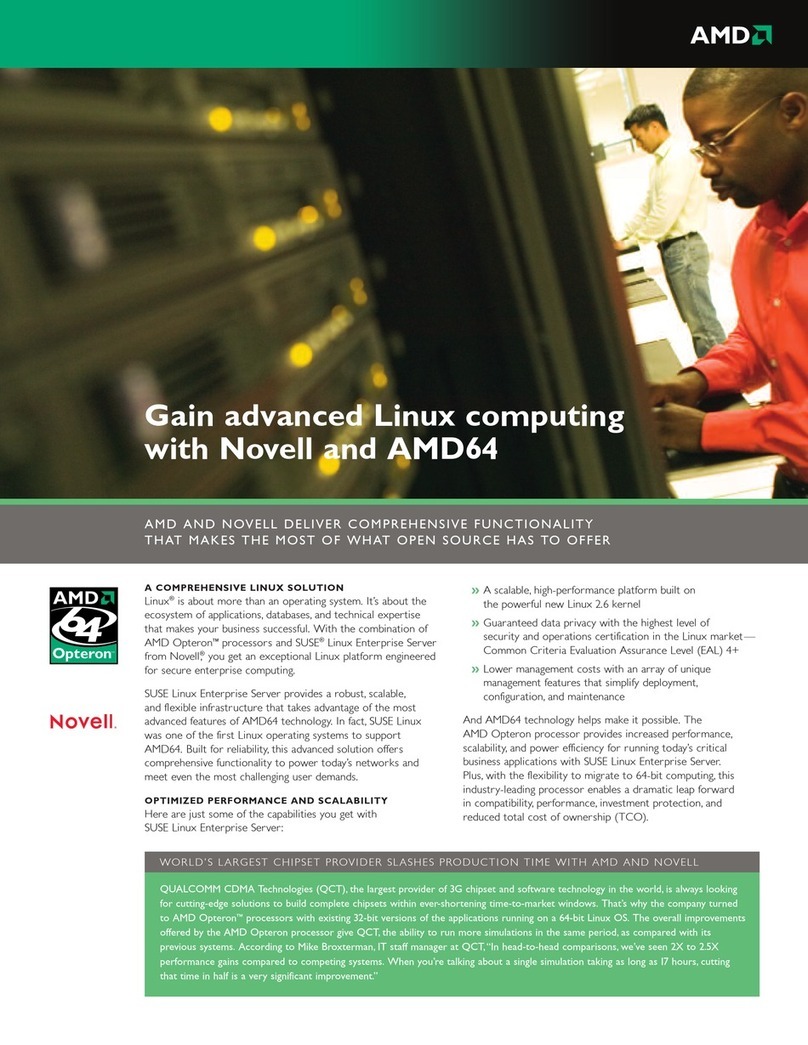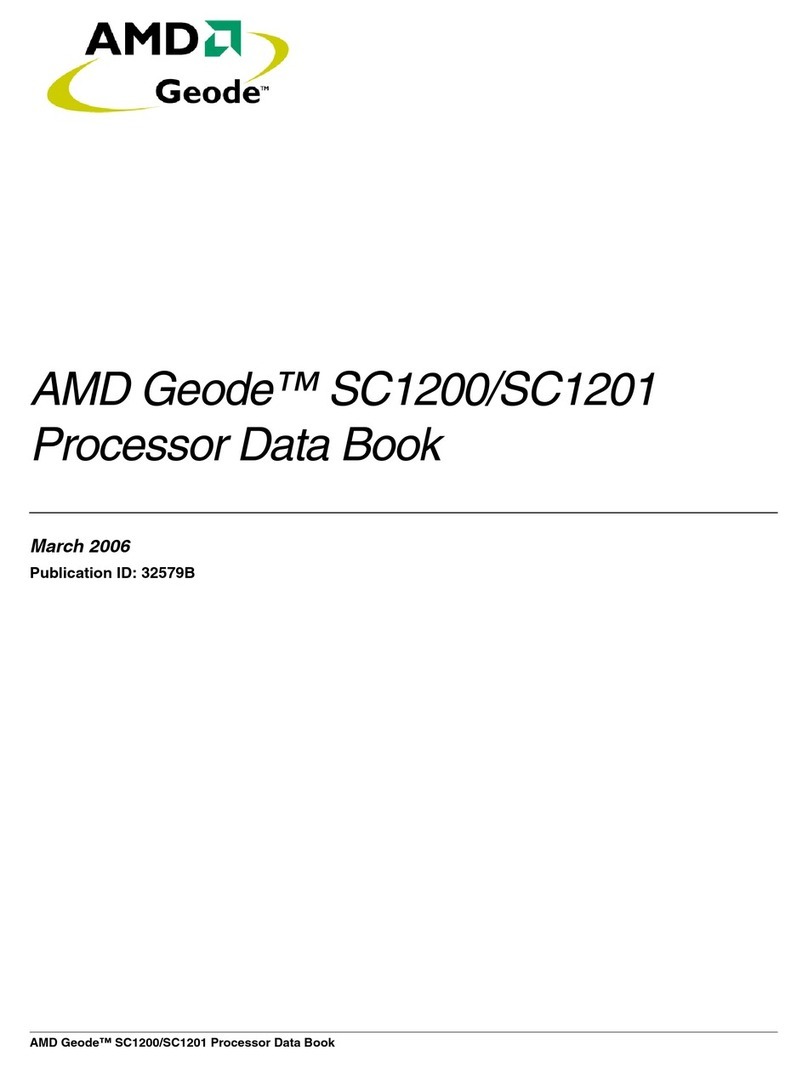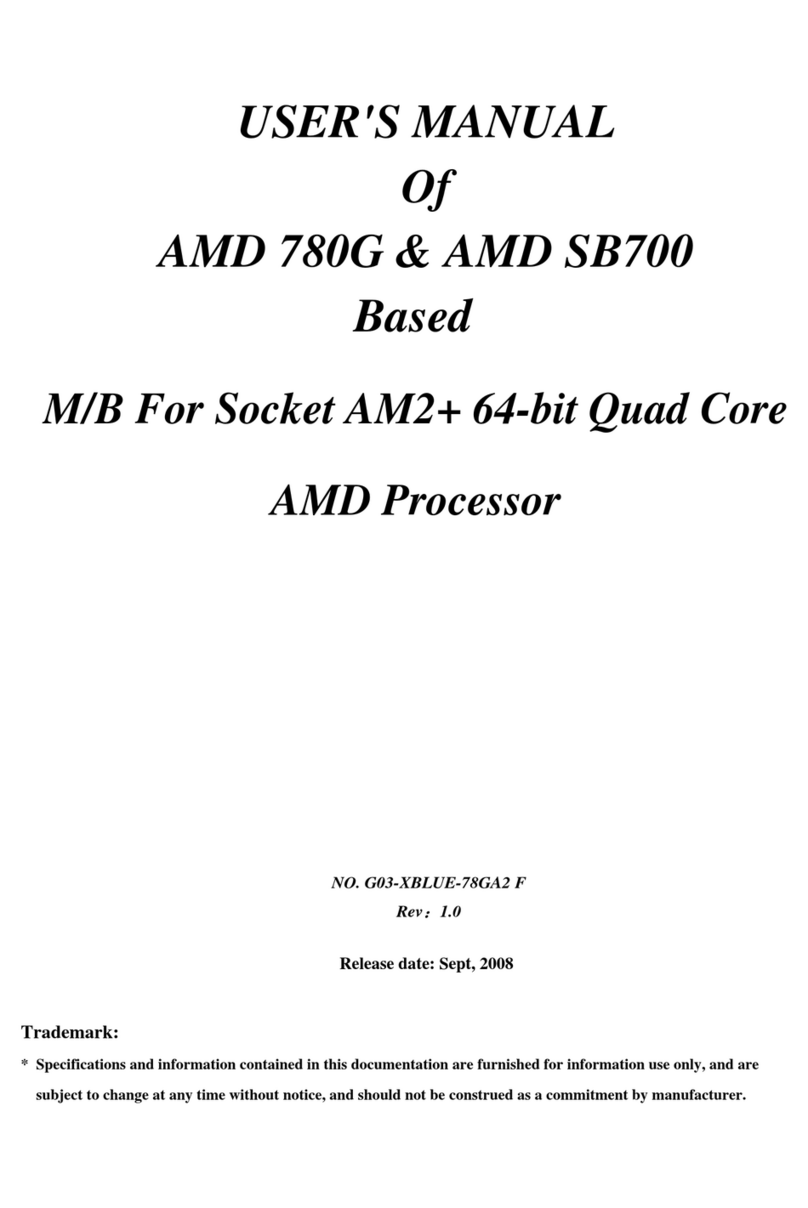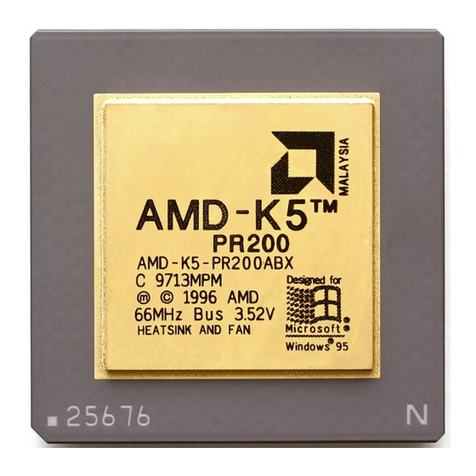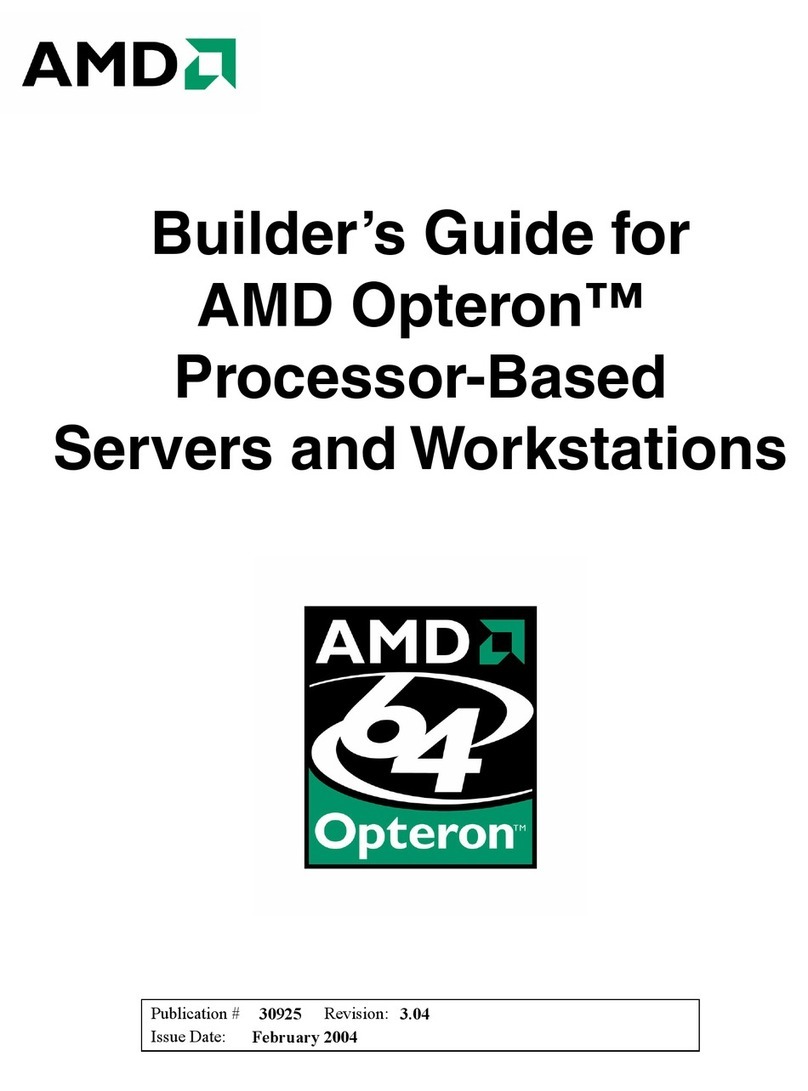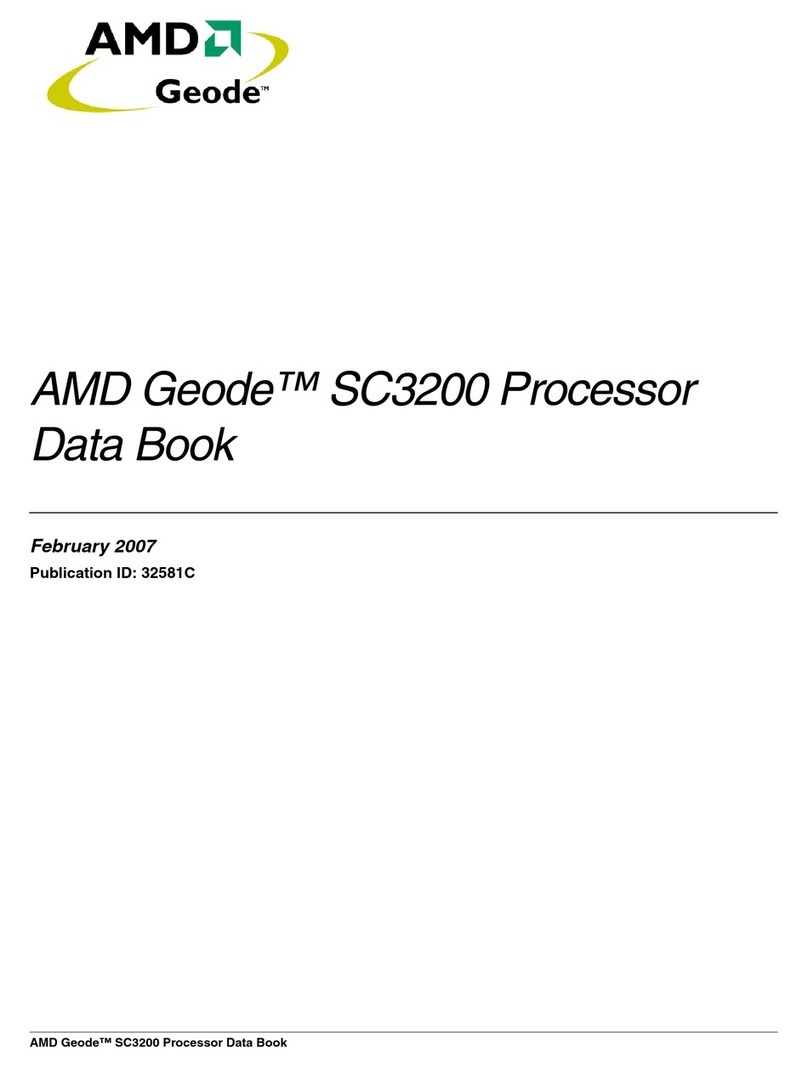
Conventions
Numbering
•Binary numbers. Binary numbers are indicated by appending a"b" at the end, e.g., 0110b.
•Decimal numbers. Unless specified otherwise, all numbers are decimal. This rule does not apply to the
register mnemonics.
•Hexadecimal numbers. Hexadecimal numbers are indicated by appending an "h" to the end, e.g., 45F8h.
•Underscores in numbers. Underscores are used to break up numbers to make them more readable. They do
not imply any operation. e.g., 0110_1100b.
•Undefined digit. An undefined digit, in any radix, is notated as alower case "x".
Register References and Mnemonics
In order to define errata workarounds it is sometimes necessary to reference processor registers. References to
registers in this document use amnemonic notation consistent with that defined in the
BIOS and Kernel
Developer's Guide (BKDG) for AMD Family 15hModels 00h-0Fh Processors
, order# 42301. Each mnemonic is
aconcatenation of the register-space indicator and the offset of the register. The mnemonics for the various
register spaces are as follows:
•IOXXX: x86-defined input and output address space registers; XXX specifies the byte address of the I/O
register in hex (this may be 2 or 3 digits). This space includes the I/O-Space Configuration Address Register
(IOCF8) and the I/O-Space Configuration Data Port (IOCFC) to access configuration registers.
•DZFYxXXX: PCI-defined configuration space at bus 0; Zspecifies the PCI device address in hex; XXX
specifies the byte address of the configuration register (this may be 2 or 3 digits) in hex; Yspecifies the
function number. For example, D18F3x40 specifies the register at bus 0, device 18h, function 3, address 40h.
Some registers in D18F2xXXX have a_dct[1:0] mnemonic suffix, which indicates there is one instance per
DRAM controller (DCT). The DCT instance is selected by DCT Configuration Select[DctCfgSel]
(D18F1x10C[0]).
•DZFYxXXX_xZZZZZ: Port access through the PCI-defined configuration space at bus 0; Zspecifies the PCI
device address in hex; XXX specifies the byte address of the data port configuration register (this may be 2 or
3 digits) in hex; Yspecifies the function number; ZZZZZ specifies the port address (this may be 2 to 7 digits)
in hex. For example, D18F2x9C_x1Cspecifies the port 1Ch register accessed using the data port register at
bus 0, device 18h, function 2, address 9Ch. Refer to the
BIOS and Kernel Developer's Guide (BKDG) for
AMD Family 15hModels 00h-0Fh Processors
, order# 42301 for access properties. Some registers in
D18F2xXXX_xZZZZZ have a_dct[1:0] mnemonic suffix, which indicates there is one instance per DRAM
controller (DCT). The DCT instance is selected by DCT Configuration Select[DctCfgSel] (D18F1x10C[0]).
•APICXXX: APIC memory-mapped registers; XXX is the byte address offset from the base address in hex
(this may be 2 or 3 digits). The base address for this space is specified by the APIC Base Address Register
(APIC_BAR) at MSR0000_001B.
•CPUID FnXXXX_XXXX_RRR_xYYY: processor capability information returned by the CPUID instruction
where the CPUID function is XXXX_XXXX (in hex) and the ECX input is YYY (if specified). When a
register is specified by RRR, the reference is to the data returned in that register. For example, CPUID
Fn8000_0001_EAX refers to the data in the EAX register after executing CPUID instruction function
8000_0001h.
•MSRXXXX_XXXX: model specific registers; XXXX_XXXX is the MSR number in hex. This space is
accessed through x86-defined RDMSR and WRMSR instructions.
•PMCxXXX[Y]: performance monitor events; XXX is the hexadecimal event counter number programmed
into MSRC001_020[A,8,6,4,2,0][EventSelect] (PERF_CTL[5:0] bits 7:0). Y, when specified, signifies the
unit mask programmed into MSRC001_020[A,8,6,4,2,0][UnitMask] (PERF_CTL[5:0] bits 15:8).
48063 Rev. 3.18 October 2012
Revision Guide for AMD Family 15hModels 00h-0Fh Processors
Conventions
7
